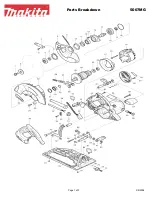
BA_PH_690-200_EN_11-22.docx
18
Switch off the machine even during short work interruptions!
Switch off the control voltage and main switch before leaving the machine. Never leave the machine unat-
tended in an unsecured state.
4.2.2
Special work within the Scope of Maintenance Work as well as Troubleshooting
in the Workflow
Observe maintenance and inspection activities prescribed in the operating manual!
These activities, as well as all other repair work, may only be carried out by qualified personnel!
For all work concerning operation, production adjustment, conversion or setting of the machine and its
safety-related equipment as well as maintenance and repair, observe switch-on and switch-off procedures
according to the operating manual and instructions for maintenance work!
Secure the machine against unexpected restarting during maintenance and repair work.
•
Lock the main switch with a padlock!
Always tighten screw connections that have been loosened during maintenance and repair work!
If it is necessary to dismantle safety equipment during set-up, maintenance and repair, the safety equip-
ment must be reassembled and checked immediately after completion of the maintenance and repair
work!
Ensure safe and environmentally friendly disposal of operating and auxiliary materials (e.g. oils) and re-
placement parts (e.g. electronic components).!
4.3
Safe Working Practices
•
Whenever possible, a push stick must be used to prevent working with the hands close to the saw blade.
Observe the danger zone of 120 mm around the saw blade. See also section
“Hazardous Areas on
the Sliding Table Saw”
.
•
Always work with all available guards and protective devices! These must be accessible at the right places
and in perfect working order.
•
Working position: Always to the side of the saw blade, outside a possible kickback area (= area directly in
front of the saw blade). See also section
“Hazardous Areas on the Sliding Table Saw”
.
•
Do not start cutting until the saw blade has reached full speed.
•
Set the distance between the saw blade and riving knife to 3 - 8 mm as evenly as possible.
•
The riving knife must not be thicker than the kerf width and not thinner than the saw blade body.
•
Only use saw blades suitable for the respective operation.
•
Do never use damaged saw blades.
•
A detachable feeding unit should be used whenever possible. This must be equipped with a separate
on/off switch.
•
A removable feeding unit is not a substitute for the riving knife. The riving knife must always remain in-
stalled.
•
When using a feeding unit, there must be sufficient space on the removal side in front of stationary obsta-
cles (danger of crushing by the workpiece!).
•
The use of the sliding table saw for cutting rebates, tenons or grooves is prohibited unless the part of the
saw blade above the table is effectively secured.
•
For “insert cutting”, suitable anti
-kickback devices must be fitted. The riving knife has to be removed and
the holder has to be fixed.
•
The saw blade guard must be positioned above the saw blade and rest on the workpiece. The saw blade is
then raised by the workpiece to the correct height, the cut is made and the saw blade is lowered again be-
fore the workpiece is removed.
•
When cutting concealed, use aids such as an auxiliary fence and a push handle.
•
The riving knife must not be removed during “concealed cutting” and “grooving”
.
•
If a second person is working at the sliding table saw to remove processed workpieces, this person must
not stand at any other place than at the end of the table extension.
















































